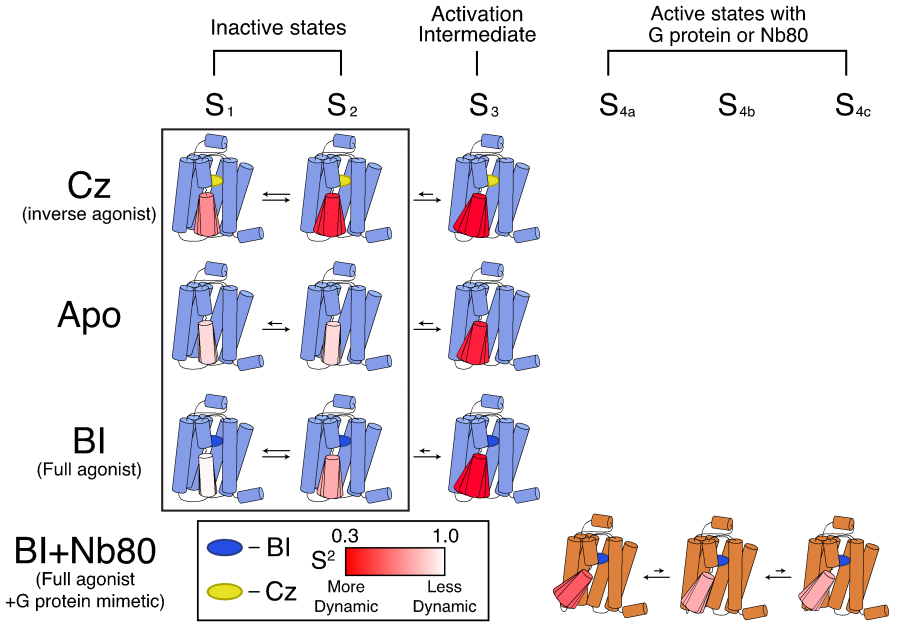GPCR dynamics. Our goal is to identify functional states of GPCRs that cont5ribute to observed activation pathways and pharmacology. GPCRs are a class of membrane protein, responsible for many kinds of signaling in humans. 30-40% of all drugs target GPCRs. We have since identified a plethora of states, including two interconverting inactive states, an activation intermediate, and an active state. Utilizing F19 NMR, CPMG relaxation dispersion studies, and saturation transfer experiments have provided exchange data and thus lifetimes for some of these states and we can make these measurements as a function of inverse agonist, antagonist, agonist, and G protein mimics.

Figure 4. A schematic illustrating the ensemble of states, identified by 19F NMR and the effect of ligands and nanobody (Nb80) on both conformational equilibria and disorder of the cytosolic domain. For all ligands, there is an increasing trend in local dynamics of Cys265 with degree of activation while activation intermediate states (S3) are the most dynamic among all states. In case of one of the inactive states, S1, the local dynamics decrease as a function of efficacy of ligand. Note that active states are only accessible with a G protein or Nb80. Low order parameters (S2) are represented in red while high order parameters being represented in white.
Recently, we have made use of lipid nanodiscs to explore many aspects of acctivation of a prototypical GPCR, the adenosine A2A receptor, in complex with the stimulatory G protein.


